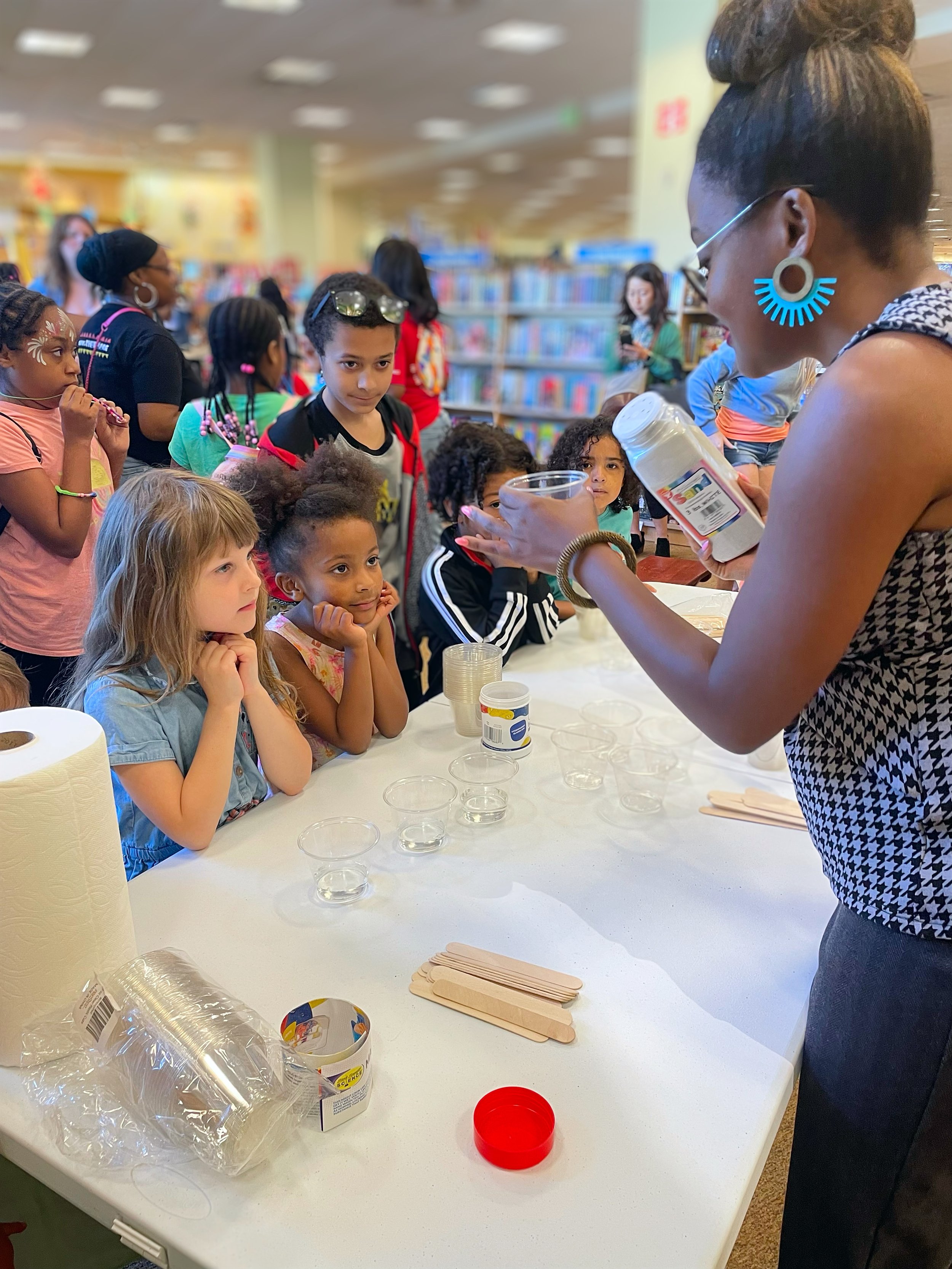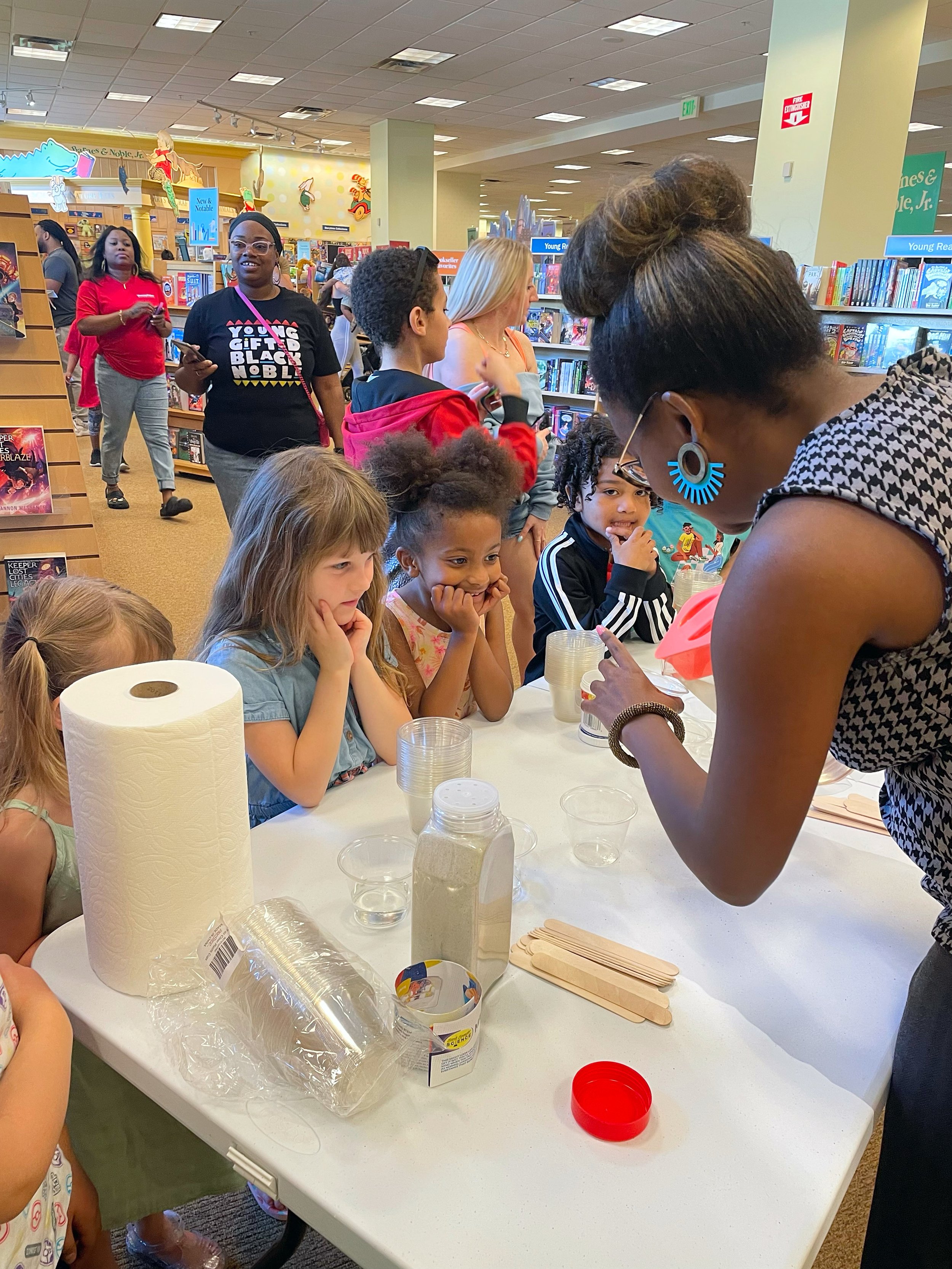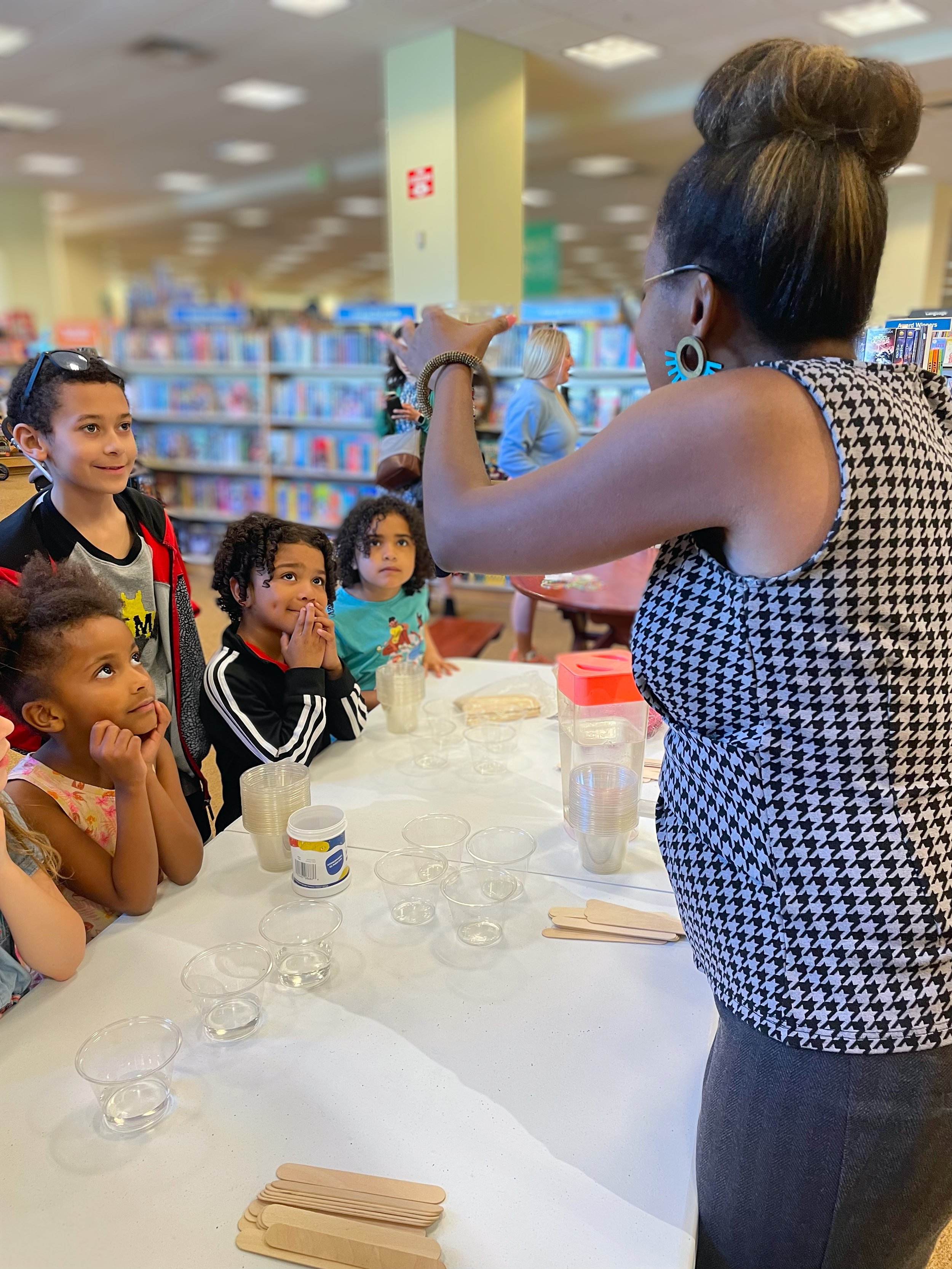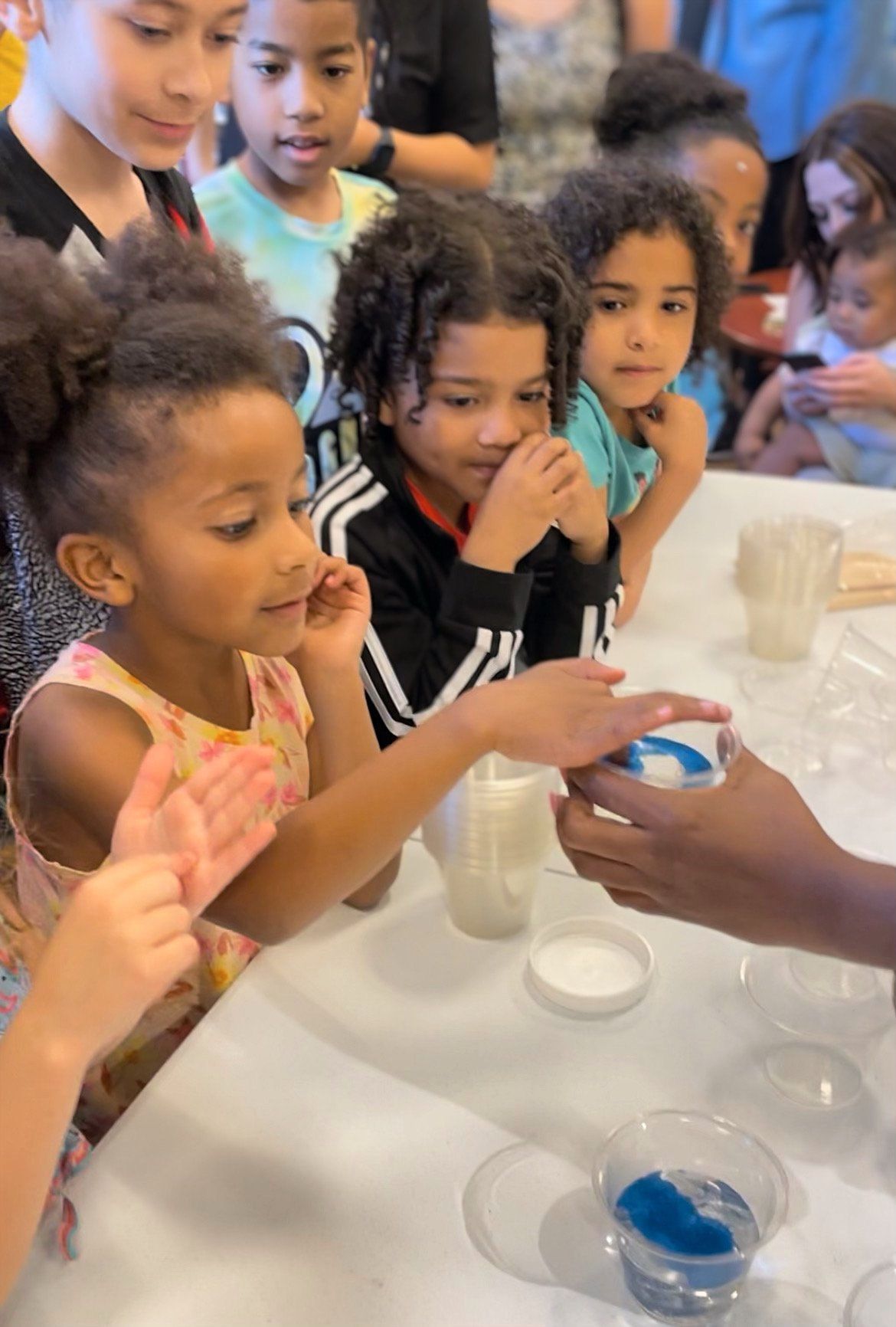Get Kids Excited about Chemistry with Magic Sand
I was a chemistry teacher for a blissful hour this Saturday. When I was 10, until I was 22, that’s what I aspired to be.
On Saturday, I read Abby Invents The Foldibot to kids at a local Barnes & Noble.
Next, I invited all future inventors to observe, question, and invent with me.
Look at their faces! Just wow. I can’t believe photos actually captured their curiosity and wonder and amazement during ten minutes of play.
A little girl, Miku — not pictured because she stood outside the frame — said, “I don’t want to participate, I just want to watch what you’re going to do.”
Me: “Okay, works for me”
And y’all guess who five minutes later shouted, “I wanna try. Can I try?”
Me (because I couldn’t resist): “ahhh now you wanna try, huh?” 😅
Us: 😂😂😂
If you’d like kids to genuinely, and dare I say immediately get excited about chemistry, here’s what you can do:
Purchase supplies:
Add water into a plastic cup. Then, add a few tablespoons of beach sand.
Ask, “What do you observe? Where is the sand located in the cup?”
Hint: Sand is denser than water so it sinks to the base of the cup.
Add water into a second plastic cup. Add a few tablesoons of Magic Sand.
Ask, “What do you observe? Where is the sand located in the cup?”
Hint: Magic Sand will float on water.
The Science of magic sand
Magic Sand is hydrophobic, meaning it “fears water”. In contrast, beach sand is hydrophyllic, meaning it “loves water”. Magic Sand is basically regular sand, coated with a hydrophobic material. As a result, its mechanism in water is very similar to why oil floats on water.
Here’s the wow factor for your Magic Sand experiment:
When there’s a layer of Magic Sand on the water surface, place a tongue depressor into the water. Place it all the way to the bottom of the plastic cup.
You’ll notice the magic sand enveloping the tongue depressor.
Now, pull the tongue depressor out of the water.
Have the kids touch the tongue depressor. It will be DRY! That, my friends, is the ‘magic’ of hydrophobicity.




